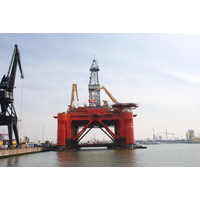DNV GL's P&A Guideline Could Save O&G $ 32 bln
The plugging and abandonment (P&A) of offshore wells represents a significant cost to operating companies and national authorities. On the Norwegian Continental Shelf (NCS) alone, the cost is estimated to be USD108bn (NOK1870bn) over the next 40 years. Now a new DNV GL guideline will introduce a risk-based approach instead of the current prescriptive practice. DNV GL estimates that when combined with optimized project execution and new technology, the P&A cost can be reduced by 30-50%.
When the production from an oil or gas reservoir ceases or is no longer profitable, authorities require the well to be P&A’d. The purpose is to establish a permanent barrier to prevent the migration of hydrocarbons to the surface. Traditional P&A methods are time consuming, costly and have remained unchanged despite technological advances across many other aspects of the industry. There are currently around 2,350 wells that will require P&A on the NCS, and 3,000 more wells are planned to be drilled in the future. In the UK, close to 5,000 offshore wells will need P&A.
“These costs are enormous. With current practices, the wells on the NCS will require the deployment of 15 rigs full-time over the next 40 years. Based on the 2013 cost, this is equivalent to more than a tenth of the current value of Norway’s sovereign wealth fund (GPFG),” says Per Jahre-Nilsen, Senior Principal Engineer in DNV GL – Oil & Gas. “We believe the time has come to tackle this issue head on by assisting regulators and the industry to establish a new methodology for dealing with the decommissioning of wells,” he continues.
The main barrier to change in this sector has been today’s prescriptive approach to the regulations, which represents a conservative interpretation of past experience. Practice also differs from country to country. In the upcoming P&A Guideline, DNV GL will use well-known and accepted risk-approach methodology in which both environmental and safety risk aspects will be key factors. DNV GL has already worked with international operators to develop an initial set of criteria. These will be further strengthened through collaboration with regulators and the oil and gas industry. The guidelines are under development and will be issued in the second half of 2015.
“This means that hazardous wells will get the attention they deserve, and benign wells will avoid excessive rig-time and expenditure. We can potentially halve the costs of plugging and abandoning wells. We're looking at potential cost savings of more than USD32bn on the NCS alone, and even more globally,” adds Jahre-Nilsen.
“DNV GL’s contribution as a risk-management expert is to help the industry, which is facing increasingly complex and demanding operations, to understand the risks and find the most efficient way to deal with these risks. Risk-based approaches are widely used in all other offshore disciplines, ensure appropriate long-term environmental protection and also represent the most rigorous method to enhance safety. It is time to apply these principles to P&A,” says Elisabeth Tørstad, CEO of DNV GL -Oil & Gas.
















